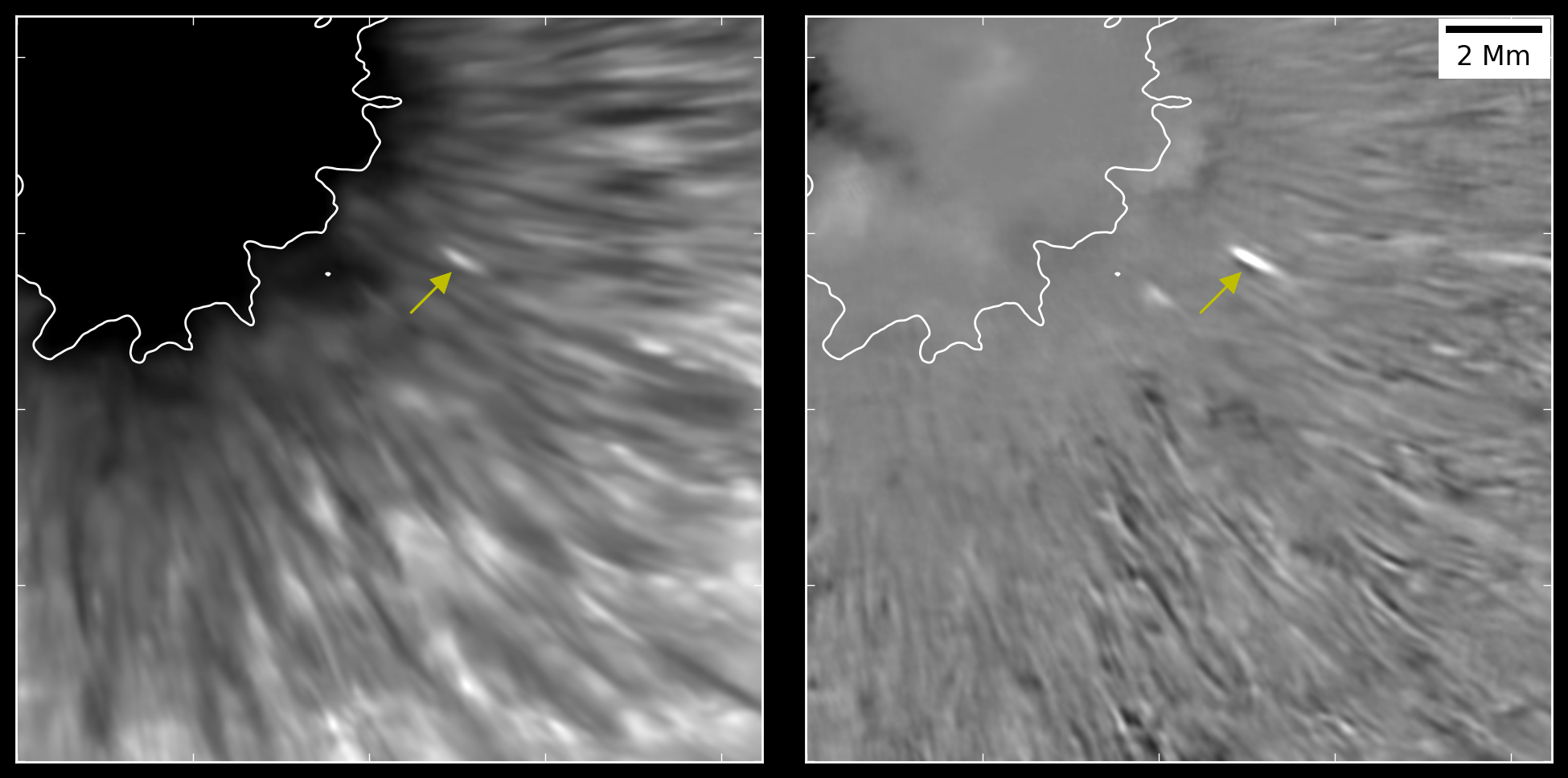The chromosphere remains to be an enigmatic layer of the solar atmosphere, both because of its complexity as a whole and the plethora of dynamic phenomena it hosts. Dr. Azaymi Siu-Tapia, from Instituto de Astrofísica de Andalucía (Granada, Spain), focuses here on the nature of jets above sunspots.

Left: Chromospheric intensity map of a sunspot (NOAA active region 12553) observed with the CRisp Imaging SpectroPolarimeter (CRISP) at the Swedish Solar Telescope (La Palma, Spain) on 16 June 2016. Right: Difference between the image on the left and a frame recorded 17 seconds before. The white solid lines delimit the umbral-penumbral boundary and the yellow arrows point to a penumbral microjet.
Above the visible surface of the Sun lies a nearly 2000 km thick layer of the Sun's atmosphere, the so-called chromosphere, which is observed as a thin reddish ring during solar eclipses due to the emission of hydrogen atoms.
The plasma or ionized gas in the chromosphere has a very low density and its temperature behaves in an unexpected way: it suddenly starts increasing with height from about 4000 degrees at the base of the chromosphere to tens of thousands degrees higher up.
The chromosphere remains to be an enigmatic layer of the solar atmosphere. Not only because it is magnetically and dynamically very complex as a whole, but also because the chromospheric environment above sunspots hosts a plethora of dynamic phenomena, such as different kinds of waves, supersonic flows, flashes, etc.
In 2007, images taken by the Japanese Hinode satellite unveiled the existence of elongated jet-like brightenings occurring ubiquitously above sunspots penumbrae, which are the slightly brighter regions surrounding the central dark nucleus of sunspots. The discovery of such small-scale transients, which were called penumbral microjets, soon led to investigate their physical and morphological properties. Those studies have revealed that the brightenings last around 1 minute, have very fast apparent rising speeds of the order of 100 km/s, and are well aligned with the background magnetic field. The microjets show a tendency to appear at the boundary of penumbral filaments or in regions where the magnetic field inclination undergoes significant horizontal variations, such as in the outermost parts of the penumbra where the field lines bend over and turn back to the Sun.
Penumbral microjets (see accompanying image) might be a direct or indirect consequence of magnetic reconnection, a physical process in which magnetic energy is converted into kinetic and thermal energy through the rearrangement of magnetic field lines; but this is still an open question.
Major breakthroughs in the understanding of penumbral microjets are expected with the European Solar Telescope, which will provide measurements at unprecedented spatial, spectral and temporal resolutions. EST will help us determine what the physical sources of these transients are and where they lie on the solar atmosphere.
